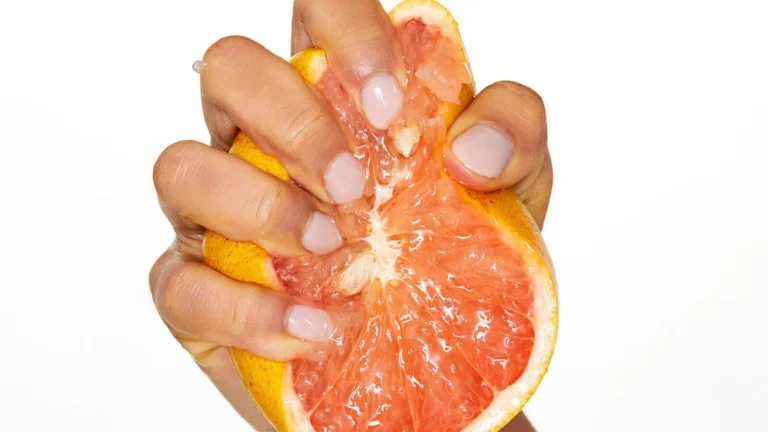The secret to longevity and radiance lies in these tiny molecules
By Hannah Shanken
•Jun 16, 2021

By Hannah Shanken
•Jun 16, 2021
Over the years, when we’ve had the chance to chat with the most esteemed thought-leaders in beauty, health, and longevity—one tip almost inevitably arises: eat more antioxidants. It’s a critical piece to the Sakara Life nutrition philosophy, and where we give a lot of credit for the coveted Sakara glow. But what are they?
Antioxidants are a class of molecules that inhibit the oxidation of other molecules (meaning, they protect them) from membrane and tissue damage. This is why the antioxidants in high-in-healthy-fat chia seeds are the key to their shelf life. The antioxidants protect the fats from spoiling.
Likewise, antioxidants control how fast our bodies age or develop disease by fighting free radicals. Free radicals are produced naturally within the body in response to environmental toxins like cigarette smoke, sunlight, chemicals, radiation, exercise and inflammation. To put it very simply, free radicals steal electrons from the proteins in your body, while antioxidants donate them.
There are three primary types of antioxidants found in nature—though the actual number of antioxidants is elusive, since there are a documented 4,000 different antioxidants just in flavonoids. But to simplify, think of phytochemicals, vitamins, and enzymes. What’s the number one source of these guys? Plants! The human body does not produce antioxidant vitamins naturally, so it is critical to eat your veggies, and in large doses. Here are some important ones, where to get them and what they will do for you:
Where to find it: Eggplant, cherries, blueberries, cabbage, figs
Benefits: Thought to be antimicrobial and antiviral, and serve to strengthen vision, memory, and cerebral blood flow. Because there is a smaller pool of edible plants with this deep shade of purple/blue where anthocyanins thrive, many health experts recommend choosing purple whenever possible—be it purple broccoli, a purple carrot, or deep, dark cabbage.
Where to find it: Orange and yellow fruits and vegetables like carrots, pumpkin, sweet potatoes and cantaloupe; dark leafy greens such as spinach, kale and collards.
Benefits: Under the umbrella of carotenoids (where foods like brown seaweed, apricots, and beets reside), beta-carotene helps maintain healthy skin and eyes as well as lowers the risk for coronary artery disease, stroke, macular degeneration, and other age-related diseases
Where to find it: Pistachios, strawberries, broccoli and cauliflower
Benefits: Extends lifespan, slows neurodegeneration, may help slow Parkinson’s disease and protect lung function
Where to find it: Cacao, green tea, gooseberries, pears, organic red wine
Benefits: Anti-inflammatory, thought to support cardiovascular health, can cross the blood-brain barrier which can help mitigate neurodegenerative diseases
Where to find it: Spinach, asparagus, broccoli, oranges, legumes such as lentils and kidney beans, and whole grains, The Foundation: Prenatal
Benefits: Helps prevent the development of neural tube defects in the fetus, as well as playing in an important role in raining heart health and preventing cell changes that may lead to cancer
Where to find: Leafy greens such as spinach, corn, carrots, and squash
Benefits: Helps ward off vision loss, reduce eye fatigue and glare sensitivity, promotes normal visual function and proper lens density, and strengthens eye tissue
Where to find: Red fleshy fruits and vegetables such as watermelon, papayas, grapefruit and tomatoes
Benefits: May help to prevent heart disease heart disease, skin aging, atherosclerosis and even breast and prostate cancers, aids in boosting sperm concentrations in men with infertility, and lowering risk of prostate cancer *Quick tip: The bioavailability of lycopene increases with cooking*
Where to find: Brazil nuts, sunflower seeds and mushrooms
Benefits: Offers cell protection, lowers cancer risk, and may help lower the risk of cardiovascular disease
Where to find it: Sweet potato, carrots, spinach, kale, mustard greens, collard greens, turnip greens, and winter squash
Benefits: Promotes healthy teeth, skeletal and soft tissue, and skin, as well as improving the immune system and cholesterol levels
Where to find it: Citrus fruits such as oranges, lemons, limes, grapefruit, bell peppers, broccoli, and hibiscus tea
Benefits: Vitamin C can aid tissue growth and repair, protect collagen, adrenal gland function, wound repair, iron absorption, protects the skin from UV damage and supercharges the immune system
Where to find: Beans, clove, grape seeds, peppermint, star anise, blueberries, cacao, and hazelnut
Benefits: May help regulate blood sugar and soothe digestive upset; polyphenols also include flavonoids, like quercetin. Flavonoids can be found in Ayurvedic herbs like gymnema sylvestre which helps to turn off sugar craving receptors on your palate.
Where to find it: Wheat germ, almonds, walnuts, hazelnuts, turnip greens and sunflower oil
Benefits: Important for maintaining healthy blood vessels, improving skin conditions, and protecting the body’s membrane
Where to find it: Cashews, chickpeas, oats, kidney beans, and almonds
Benefits: Important in formation of bone tissue, healing of wounds and sores, production of proteins, the regulation of insulin and helps boost the immune system by balancing your body’s response to infection, and preventing out-of-control inflammation
Science-Backed Solutions